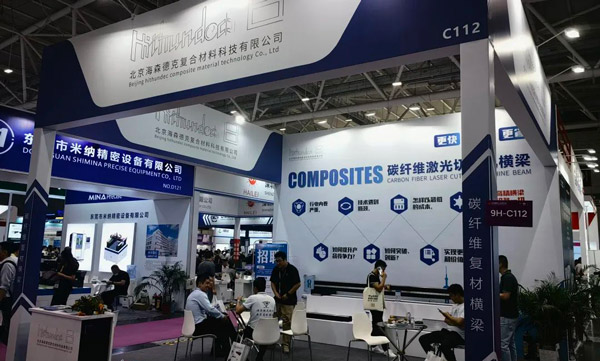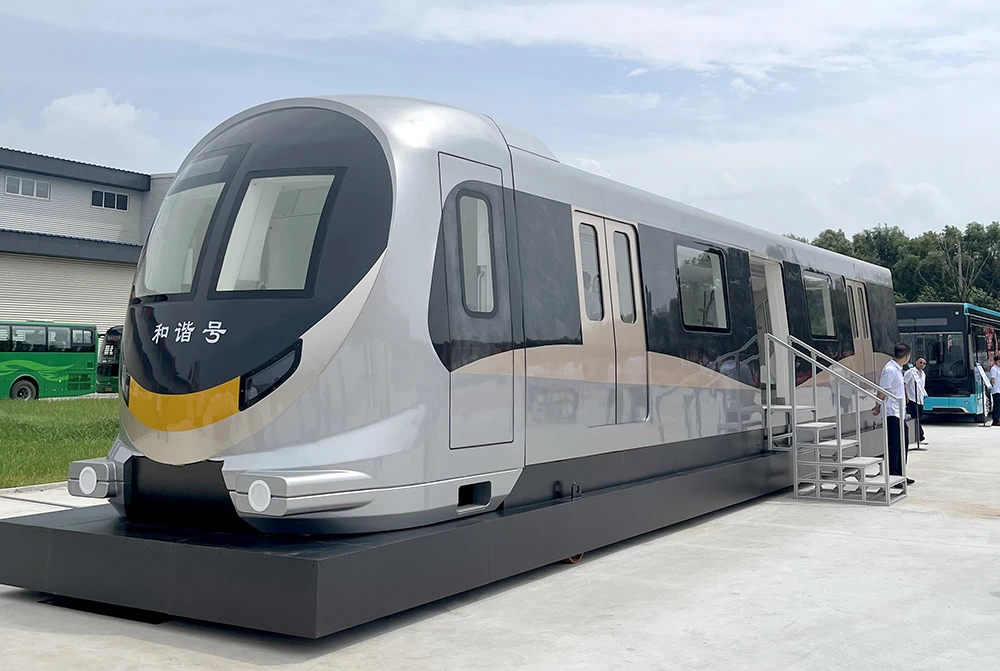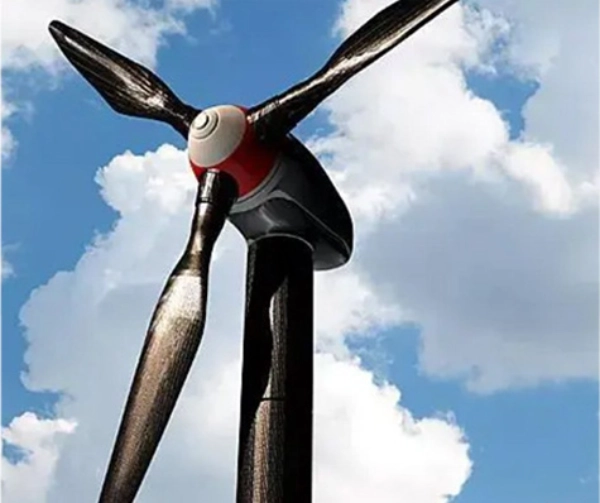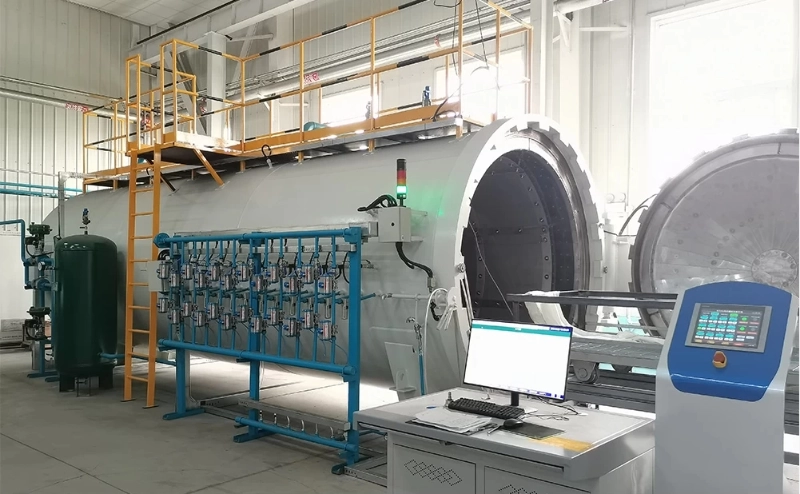Historically, boosting the laser power has been seen as the most straightforward and potent method for enhancing the efficiency of machining processes. Yet, with the advent of 60,000-watt laser cutters, a debate has emerged within the industry about whether we've hit the upper limit of laser power capabilities. Wu Rangda, the President of Penta Laser, posits that this level of power is sufficient to fully supplant plasma and flame cutting technologies. He suggests that pushing beyond this threshold won't yield substantial gains in cutting efficiency or capability, but rather escalate costs and energy usage for users.
However, the quest for greater efficiency in the industrial sector is perpetual. If we've indeed reached the pinnacle of what laser power can offer, what avenues remain for us to explore in our pursuit of improved machining efficiency? Let's delve into alternative strategies that can optimize performance without relying on increased laser power.
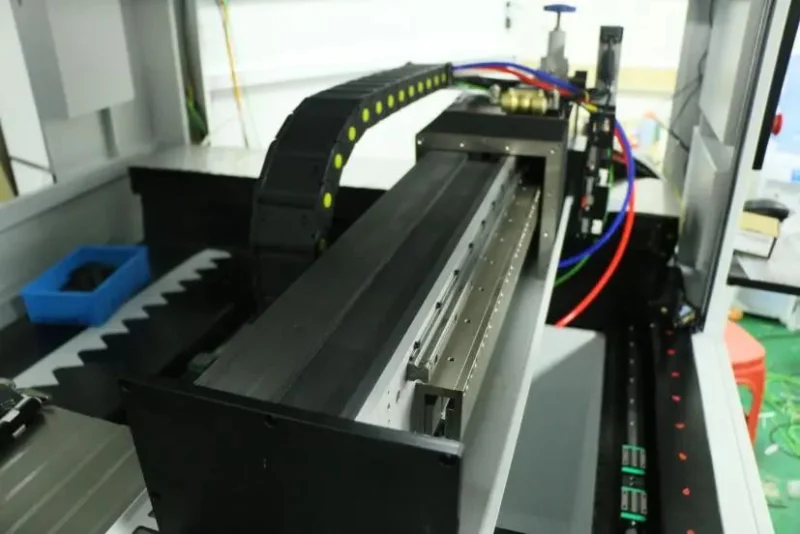
Doubling the Acceleration: The Innovative Integration of Carbon Fiber Beams
The challenge of enhancing machine tool performance without overhauling the core technology didn't keep the writer up at night for long. His recent visit to Feiyue Laser provided a spark of inspiration, particularly through their innovative approach to the machine base design.
Feiyue Laser, a leading high-tech enterprise, has made significant strides in the application and development of precision laser technology. Their expertise spans across various laser applications, including cutting, welding, and marking, with a strong track record of success. Liu, the General Manager at Feiyue Laser, shared that they initiated a game-changing move last year by integrating carbon fiber beams into their machinery. These beams offer a compelling blend of high strength, resistance to deformation, and lightweight design, which not only enhances the processing efficiency but also contributes to cost reduction in practical applications.
The beam is a pivotal element in gantry machine tools, with its static and dynamic properties dictating the overall performance of the machine. This, in turn, significantly influences the machine's processing efficiency, precision, and stability. Traditionally, machine tools have employed metal beams, predominantly made from steel and aluminum alloy.
Steel cast beams are revered for their stability and precision, yet their substantial weight typically restricts their use to applications that do not demand high-speed operations. To achieve high-speed and high-acceleration capabilities, these machines require powerful motors with substantial torque, which can be a limiting factor when dynamic performance reaches its peak. To counteract this, the industry began exploring aluminum alloy beams to reduce weight. However, despite their lighter nature, aluminum beams still impose limitations on speed and acceleration improvements. The material's low modulus makes it softer and more prone to deformation, and its high thermal expansion coefficient can adversely affect the machine's accuracy. As a result, recalibration of aluminum alloy beams is often necessary every 3 to 6 months to maintain precision.
The carbon fiber beam is remarkably lighter, tipping the scales at just 1/5 to 1/4 of the weight of steel, and 1/3 to 1/2 of that of aluminum alloy. This substantial reduction in weight is a game-changer, enabling us to significantly ramp up the speed and acceleration capabilities of our machine tools. Liu, from Feiyue Laser's R&D team, has shared that since incorporating the carbon fiber beam, they've been able to make impressive strides.
The team has not only doubled the acceleration of their precision cutting machines from the previous range of 0.8G to 1G to an impressive 2G, but they've also achieved a remarkable leap in accuracy. The precision has been greatly elevated to the micron level, a testament to the transformative impact of carbon fiber technology on their machinery. This innovation is not just about speed; it's about precision and efficiency, setting a new standard in the industry.

Carbon Fiber Beams: A Cost-Effective Innovation in Machine Tool Efficiency
Liu highlighted not just the speed benefits of carbon fiber beams at Feiyue Laser but also their cost-saving potential. Leveraging the natural lightness of carbon fiber, these beams have minimal motion inertia, which significantly lowers the demands on the machinery's rack and motor systems and also reduces the overall weight of the machine base. Traditionally, achieving high-speed and high-acceleration performance with steel or aluminum alloy beams necessitated the use of powerful, high-torque motors. However, with carbon fiber beams, Feiyue Laser has managed to maintain the same level of performance while effectively reducing costs associated with the machine base, rack, and motor. Even with standard motors, they can now achieve an acceleration of 1G, with a notable improvement in accuracy.
In the industrial sector, the relentless pursuit of higher speeds and acceleration often comes at the expense of precision, and vice versa. Enhancing both simultaneously typically requires a substantial investment in more robust motors and racks, which may not always be justified by the value it adds for the user. Liu pointed out that small and micro enterprises cannot afford such high-risk investments that might not be accepted by their customers. However, carbon fiber beams have increased the likelihood of successful acceleration improvements at a fraction of the cost of traditional metal beams, prompting Feiyue Laser to completely phase out metal beams in favor of carbon fiber.
For end-users, the adoption of carbon fiber beams translates into substantial cost savings. With the acceleration of machine tools doubling from 1G to 2G, users can now get the output of two machines with the investment of one, significantly enhancing the value of their machinery. Additionally, the lighter beams reduce wear on the guide rails and racks that bear the primary motion load, extending the service life of these components and the equipment as a whole.
It's important to note that the manufacturing process of metal beams involves hot-working, which can introduce residual stresses that lead to bending and deformation over time, affecting the machine's accuracy. Even with repeated aging heat treatments, these stresses cannot be entirely eliminated. Aluminum alloy beams, being softer, are prone to deformation and require frequent recalibration to ensure accuracy, adding to the after-sales service costs and causing potential downtime for maintenance.
In contrast, carbon fiber, being an inorganic and brittle material, does not undergo plastic deformation. Its minimal elongation at break and resistance to creep and fatigue mean it can maintain high accuracy without the need for frequent recalibration. The lighter weight of carbon fiber beams also reduces stress on the motor, minimizing heat generation and the associated risk of motor burnout. This not only helps enterprises save on after-sales costs but also spares users the inconvenience of frequent maintenance shutdowns.

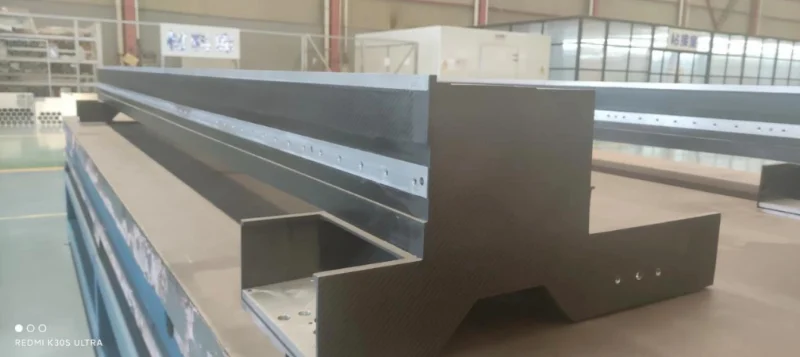
Carbon Fiber Beams: A Natural Fit for High-Power Laser Cutting Machines?
Since Feiyue Laser primarily manufactures precision laser equipment, which may not initially align with the needs of high-power laser cutting machines as mentioned earlier, the writer sought a more fitting answer to the original question. Through the introduction of Liu, the General Manager of Feiyue Laser, the writer contacted Beijing Hithunder Composite Materials Technology Co., Ltd., the sole manufacturer of carbon fiber beams in China.
Mr. Li, President of Hithunder, explained that his company has provided support to a domestic manufacturer of ultra-high-power laser cutting machines with power ratings over 10,000 watts, and has received a substantial number of orders. While these machines prioritize speed and acceleration, especially when power is at its peak, their accuracy requirements might not be as stringent as those for precision equipment.
The writer acknowledges that after increasing laser power, there is often a limitation in speed when cutting complex or small patterns. Only longer, straight lines or arcs can truly take advantage of the speed benefits of high power. With the advancement of industrial design, the objects processed by machine tools are becoming increasingly curved, refined, and intricate, meaning that high power alone cannot comprehensively improve processing efficiency. The key lies in the acceleration and speed of the motion axis, particularly the acceleration of the beam.
Currently, steel beams are too heavy, and their driving motors lack sufficient power and torque, leading to vibrations that restrict performance improvement. Although aluminum beams are lighter, their softness and lack of stiffness result in vibrations during acceleration, which also limits performance enhancement. Carbon fiber beams, on the other hand, are lightweight and offer superior stiffness compared to aluminum, approaching that of steel. Additionally, the material itself has excellent damping properties for the propagation of vibrations, aiding in the reduction of motion-induced vibrations. Therefore, carbon fiber beams can significantly enhance the dynamic performance of high-power cutting machines.
Mr. Li also discussed the carbon fiber beam's resistance to accidental damage. Gantry beams typically use bilateral motor numerical control synchronization drives, which can lose synchronization in the event of control system failure or external collisions, potentially causing the beam to become stuck or severely twisted and deformed. Metal materials, prone to plastic deformation, can suffer permanent deformation requiring beam replacement. Carbon fiber, however, does not undergo plastic deformation and can revert to its original shape after significant deformation, provided there is no internal damage. This characteristic makes carbon fiber superior to metal materials and suitable for use in elastic components like vibration table spring plates, where it maintains stable elasticity without decay.
Hithunder will be participating in the Laser Expo at the Shenzhen International Convention and Exhibition Center (Bao'an New Hall) from June 27 to 29, where they will engage in in-depth exchanges with industry colleagues at Booth C112 in Hall 9.

